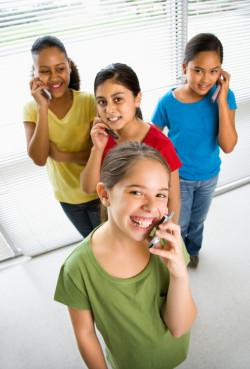Does your child use Musical.ly? If so, they are not alone. It has become one of the most popular apps used by kids and tweens.
The premise is a lot of fun. Kids lip sync to a short snippet of music and it records a little video of them. They can be funny and creative and they have a blast looking at both their own and their friends’ creations.
Unfortunately there are some safety risks that come with using the Musical.ly app.
5 things Parents Need to Know About Musical.ly:
1. It’s impossible to have a “Private” account.
My 9-year-old daughter absolutely loves making and watching videos on Musical.ly. If I let her, she’d spend hours pouring over her friends’ latest posts and making her own.
One evening, I was making dinner and I could hear her playing Musical.ly videos in the living room. I was lost in my own thoughts, when a song caught my attention. When I focused in on the lyrics, I was pretty shocked. There was profanity and really adult content.
I sat down on the couch to take a closer look at what she was watching. It was pretty upsetting.
When she first got the app, we set it up so that it was Private. She should only be able to see videos of her friends and vice-versa. The problem is even with this setting there is a search feature that exposes her to anyone’s videos.
2. There are a lot of inappropriate videos on Musical.ly
With very little searching kids can find videos with very explicit language. There are also lots of skimpy outfits and sexual dance moves. It’s impossible to block the search feature so even with a “Private” account, kids can access these videos
3. Clicking on hashtags can lead to pornographic videos.
There are hashtags at the bottom of the Musical.ly home page that sometimes link them to pornographic videos. Although I didn’t find any when I clicked around, I’ve heard from many parents who have. Kids are just one click away from viewing them.
4. Kids get addicted to the rating system.
Another problem is that the rating system can become addictive. Often kids become really concerned about the number of likes they get for their videos. Many keep their accounts public, just so they can collect more likes. They also may feel upset if they don’t get a lot of likes.
5. Kids can interact with strangers.
Because of the rating system and search features, even with Private accounts kids can interact with strangers. It’s never a good idea for kids to interact with people they don’t know. Too many kids have been lured and hurt by strangers.
It’s a shame there are these features since kids so enjoy making the videos. Hopefully, Musical.ly will make some changes to the app so it becomes safer for our kids.
If you would like to share your concerns or suggest changes to the app, you can email them at: [email protected]












